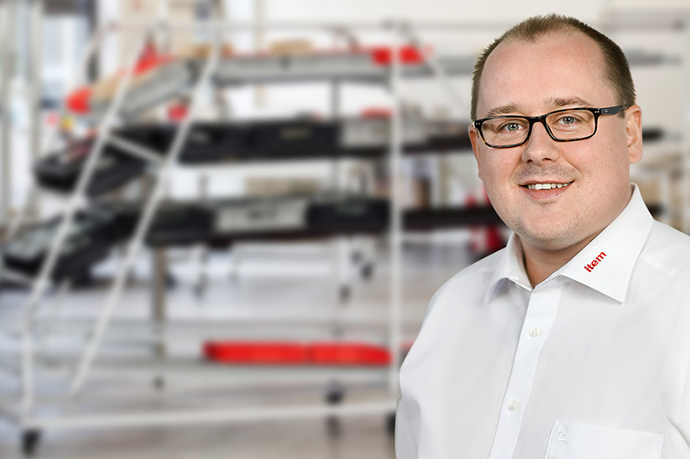Why ergonomic principles are important, even in the digital future.
As we enter the era of digitalisation and Industry 4.0, the same questions keep cropping up time and again. Will the human worker be soon replaced by digital colleagues? Is the ‘smart factory’ a place where processes are dictated by networked machinery? It’s understandable to think these things but there’s no reason to be afraid. Our cognitive capabilities mean robots or algorithms are no match for us in many areas of work – and it will stay that way. And if you also take complex, motor-controlled processes into consideration, this becomes even clearer. But some things remain uncertain. What will the industrial work bench of the future look like? What effects does Industry 4.0 in production have on ergonomics and employee welfare?
The golden opportunity of digital transformation
One thing is for sure – traditional mass production will soon be a thing of the past, as it is gradually being replaced by series production of customized individual pieces. Intelligent networking of all stations within the value-added chain aims to achieve flexible and customized production of a batch size of 1. For this to succeed, the processes upstream and downstream of production have to continuously exchange data amongst themselves and with all stages of the production process. This will help provide an early means of preventing coordination errors caused for example by material delays at the work bench.
Fears that the industrial working environment will dramatically change are unfounded, however. The individual worker will undoubtedly have to come to terms with new technologies. In the context of digital transformation, the concept of lifelong learning is on everyone’s lips. But that doesn’t mean we need to fear for our jobs. Existing aspects – including ergonomics, customization and modularity – will become increasingly relevant. Companies need to concentrate on these aspects to maintain an attractive place to work for future generations and ensure success for years to come.
Ergonomics is anything but ready for the scrap heap
Ergonomic aspects continue to play an important role in work bench design. They help boost employees’ productivity and health in equal measure. Individualisation of the work bench is a key aspect in this regard. An ergonomic work bench system offers the perfect foundation for ensuring manual production processes become more effective in the future. A case in point are height-adjustable work chairs and tables, which can be adjusted perfectly to any given body type. Transforming a standing work bench into a sitting one (and vice versa) is easily done, too. What’s more, the customized positioning of materials and tools avoids uneven physical strain.
It’s often overlooked but no less important – the right LED or natural lighting helps boost concentration levels and thus reduce the risk of errors. To top it all off, a modular work bench system can be seamlessly adapted and expanded to keep up with the increasingly mechanical world of work. There is relatively little effort or downtime involved. Monitors, for example, can be mounted in an ergonomic position or cables and wiring can be safely stowed away in cable ducts or conduits. Pivoted monitor arms ensure everything is organised in a precise and customized fashion to avoid unnecessary physical strain. Screens should always be placed in the worker’s field of vision, not to the side.
Industry 4.0 in production – an advantage for ergonomics
Demographic changes and the increasing average age of workers in Germany are highlighting the importance of ergonomics. Companies are keen to ensure their ageing, highly qualified workers are healthy and productive for as long as possible. After all, ergonomic work bench design is also a preventive measure. Industry 4.0 in production should be seen as a way of easing the burden on employees because, despite the growing trend of automation, even the future can’t get around manual assembly tasks.
This is where collaborative robots come into play. Their job is to take over strenuous working processes, such as lifting and positioning heavy workpieces, from employees who directly interact with the robots. Deploying collaborative robots also calls for particularly stringent safety procedures. The risk of a potential collision between humans and machinery must be kept to a minimum. Cyber-physical systems (CPS) are used to support human workers, too, and also serve as a means of storing information. The mechanism can autonomously decide which employee, based on their physical build, is a suitable choice for the next working stage and who should take a break.
Are you interested in ergonomics and what the working world of the future will look like?
Then we have something that might just help! Simply subscribe to the item blog by completing the box at the top right!









